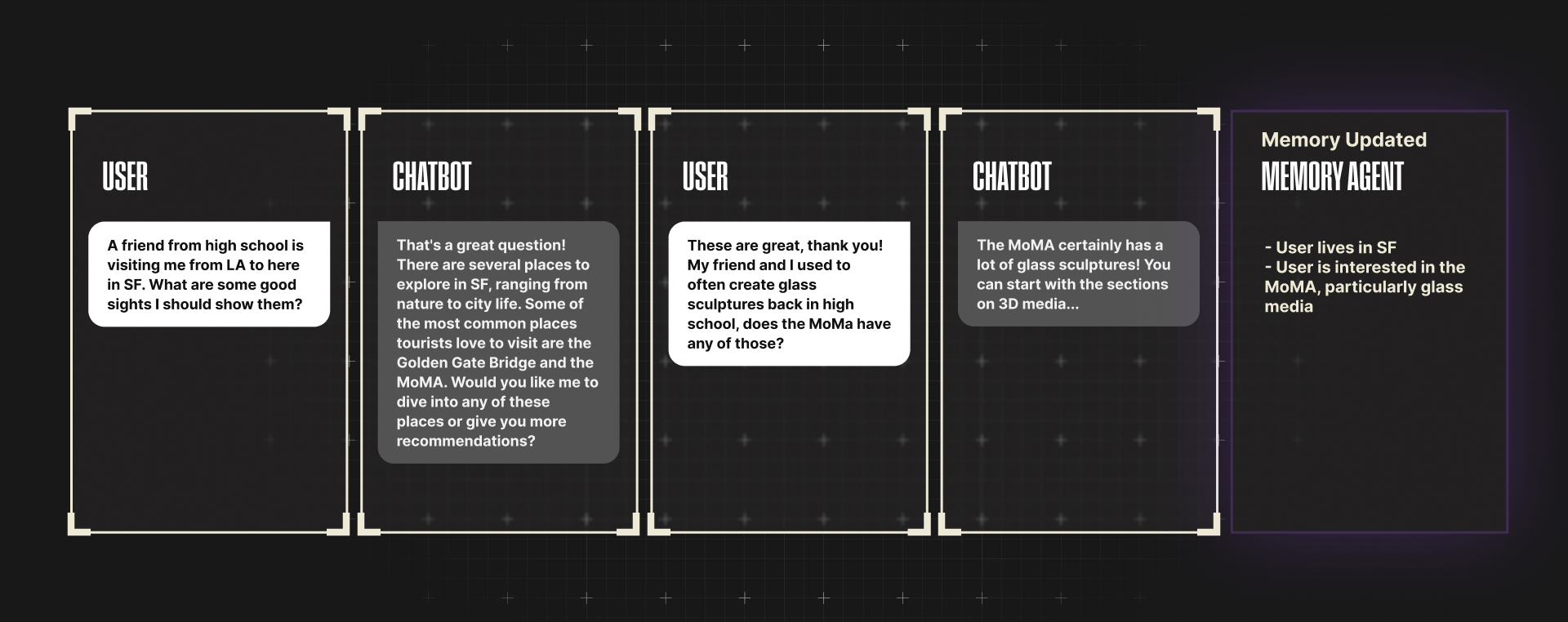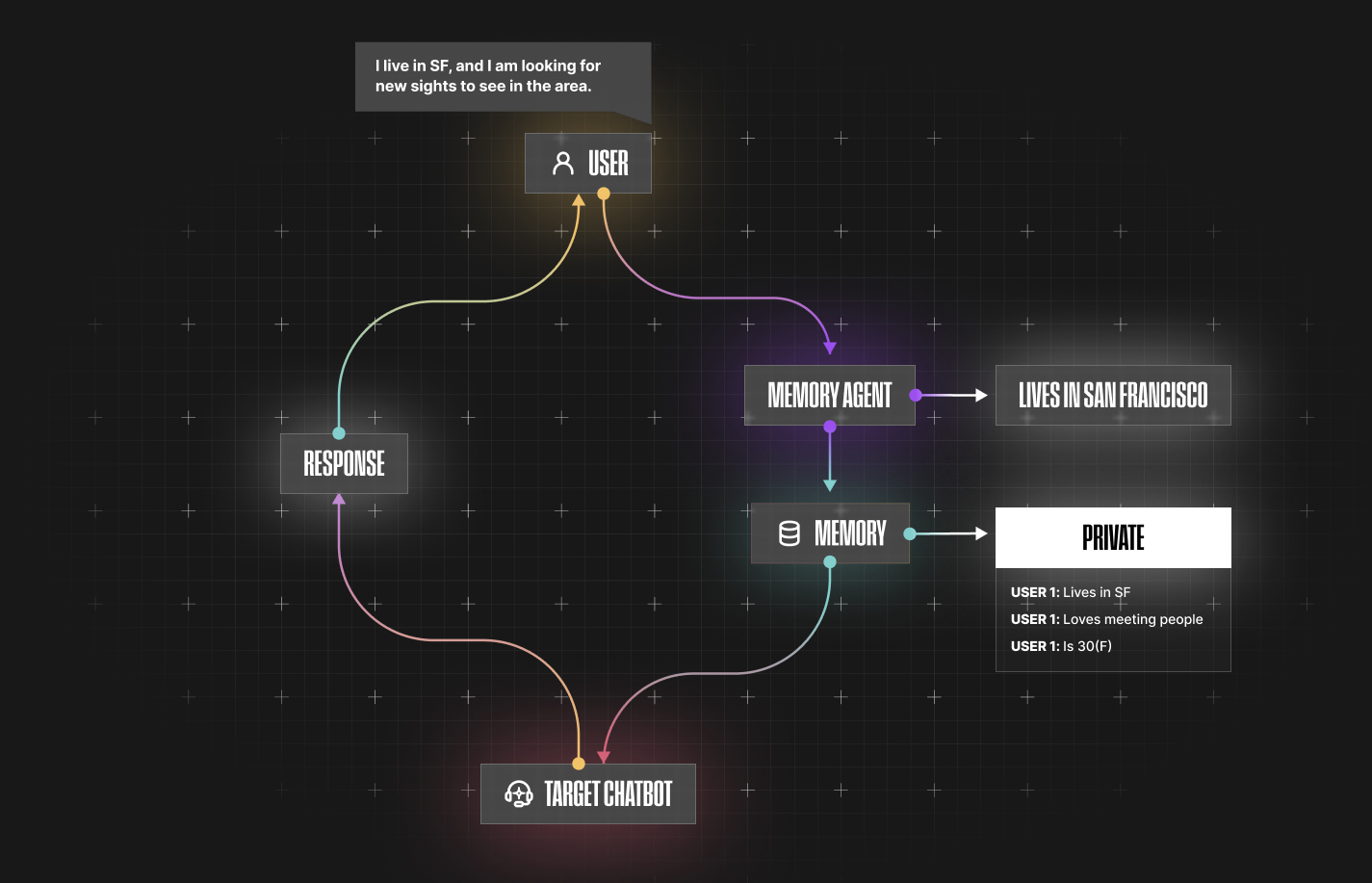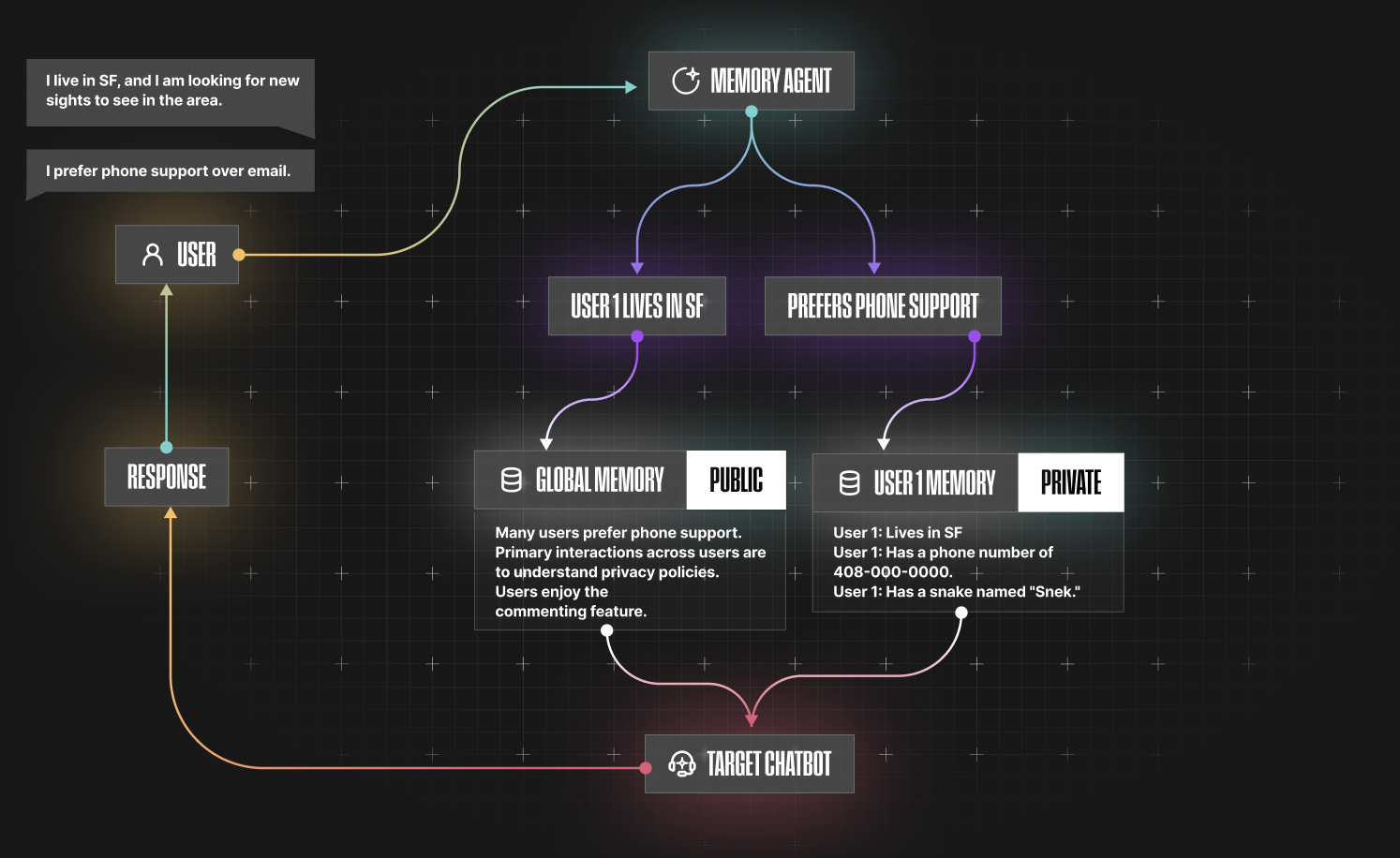What Is Memory in LLMs and Why It Matters for Securing AI Agents
This blog explains how memory in LLMs underpins both usability and security, showing why its design is critical to preventing data leaks, emergent exploits, and autonomous chaos... and how Straiker leverages memory to red-team and defend AI agents.


For large language models (LLMs), memory is a double-edged sword. When done right, it powers trust, safety, and intelligence, but when done poorly, it can amplify mistakes, leak sensitive data, or miss critical threats. As chatbots become more autonomous and operate in regulated, high-stakes environments, memory has become one of the most critical components of safe, effective agentic behavior. In this blog, we’ll break down what memory means in LLMs, how it works, and why its implementation is key to its success.
What Is Memory in LLMs?
Memory enables LLMs to retain information and reason over prior interactions. Unlike simple conversation history, memory creates structured representations of users, including their preferences, tasks, and past actions.
One such platform that offers memory agents is mem0, which specializes in extracting, summarizing, and storing vital information from a user’s conversation.
Here is an abstracted example of what mem0 might store from the following exchange with a chatbot:

Memory helps LLMs maintain continuity, personalize interactions, and improve reasoning across time.
Why Memory Matters for AI Security
As AI chatbots and agents become more autonomous and operate in regulated, high-stakes environments, memory has become one of the most critical components of safe, effective agentic behavior as part of a broader rethink of what security means in the AI age.
When memory is used well, it provides the following:
- Persistent profiles of users or agents to detect anomalies.
- Multi-step context retention to catch gradual or delayed exploits.
- Pattern recognition across sessions to reveal emergent risks.
Memory can be implemented in several ways, such as private memory and global memory, each having its own pitfalls and advantages.
For instance, take a look at this architecture for private memory, accompanied by a short demo.

When users have their own private memory, it allows conservations to remain personalized while preventing cross-user data leakage, thus keeping interactions safe and secure. However, this form of memory does have a setback: it cannot capture broader patterns across all users.
This is where “global memory”, which would mean that key information from all users are dumped into a single database, steps in. Unlike private memory, global memory is efficient when bucketing people into demographics, extrapolating trends from users, or identifying common feedback provided by customers.
Several companies often benefit from both, in which they can guard personal customer information in private memory while allowing generic feedback and some demographic attributes to be placed in global memory.
A form of hybrid memory is illustrated below:

However, in the above, the memory agent, which is an autonomous layer that determines whether a piece of information from a customer should be placed into global memory or private memory, can occasionally fail.
This is due to a variety of factors, such as insufficient guardrails when bucketing memory, a hacker assuming the identity of another user, a weak system prompt that is vulnerable to attacks, or not having private memory to begin with.

Some issues go beyond an infrastructure diagram, such as team disagreements on classification logic. For instance, "After how many users say they prefer phone over email, should this be seen as a common trend and placed into global memory?"
These vulnerabilities open the door to hallucinated generalizations, cross-user contamination, or even worse—privacy violations, as seen in the demo video below and in real-world zero-click exfiltration attacks.
In the same way that threat actors exploit gaps in state or visibility, attackers can manipulate LLM-based agents that have murky memory. Without a persistent understanding and security of context or identity, an agent may repeatedly fall for prompt injection, data exfiltration, or role confusion attacks.
How Straiker Protects Against Memory Issues
Straiker offers products for red-teaming capabilities, such as Ascend AI, and AI runtime protection and detection for user queries and chatbot responses, such as Defend AI.
As these two work together, companies can test the strength of their chatbot applications against novel attacks and receive assessment reports, which provide a detailed breakdown of where they fail and succeed.
Key Takeaways
Memory in LLMs isn't just a usability layer, it is a security imperative. As enterprises deploy autonomous agents into customer-facing, regulated, or high-stakes environments, the ability to store, recall, and reason over prior state becomes the foundation for resilience. For memory to deliver on its promise, how it is implemented matters just as much as why it exists.
At Straiker, secure memory powers smarter red-teaming and safer AI agents, shifting us from reactive defenses to proactive, contextual systems that safeguard the past, present, and future of AI. When you’re ready, we’re here to show you a customized demo of our solutions.
For large language models (LLMs), memory is a double-edged sword. When done right, it powers trust, safety, and intelligence, but when done poorly, it can amplify mistakes, leak sensitive data, or miss critical threats. As chatbots become more autonomous and operate in regulated, high-stakes environments, memory has become one of the most critical components of safe, effective agentic behavior. In this blog, we’ll break down what memory means in LLMs, how it works, and why its implementation is key to its success.
What Is Memory in LLMs?
Memory enables LLMs to retain information and reason over prior interactions. Unlike simple conversation history, memory creates structured representations of users, including their preferences, tasks, and past actions.
One such platform that offers memory agents is mem0, which specializes in extracting, summarizing, and storing vital information from a user’s conversation.
Here is an abstracted example of what mem0 might store from the following exchange with a chatbot:

Memory helps LLMs maintain continuity, personalize interactions, and improve reasoning across time.
Why Memory Matters for AI Security
As AI chatbots and agents become more autonomous and operate in regulated, high-stakes environments, memory has become one of the most critical components of safe, effective agentic behavior as part of a broader rethink of what security means in the AI age.
When memory is used well, it provides the following:
- Persistent profiles of users or agents to detect anomalies.
- Multi-step context retention to catch gradual or delayed exploits.
- Pattern recognition across sessions to reveal emergent risks.
Memory can be implemented in several ways, such as private memory and global memory, each having its own pitfalls and advantages.
For instance, take a look at this architecture for private memory, accompanied by a short demo.

When users have their own private memory, it allows conservations to remain personalized while preventing cross-user data leakage, thus keeping interactions safe and secure. However, this form of memory does have a setback: it cannot capture broader patterns across all users.
This is where “global memory”, which would mean that key information from all users are dumped into a single database, steps in. Unlike private memory, global memory is efficient when bucketing people into demographics, extrapolating trends from users, or identifying common feedback provided by customers.
Several companies often benefit from both, in which they can guard personal customer information in private memory while allowing generic feedback and some demographic attributes to be placed in global memory.
A form of hybrid memory is illustrated below:

However, in the above, the memory agent, which is an autonomous layer that determines whether a piece of information from a customer should be placed into global memory or private memory, can occasionally fail.
This is due to a variety of factors, such as insufficient guardrails when bucketing memory, a hacker assuming the identity of another user, a weak system prompt that is vulnerable to attacks, or not having private memory to begin with.

Some issues go beyond an infrastructure diagram, such as team disagreements on classification logic. For instance, "After how many users say they prefer phone over email, should this be seen as a common trend and placed into global memory?"
These vulnerabilities open the door to hallucinated generalizations, cross-user contamination, or even worse—privacy violations, as seen in the demo video below and in real-world zero-click exfiltration attacks.
In the same way that threat actors exploit gaps in state or visibility, attackers can manipulate LLM-based agents that have murky memory. Without a persistent understanding and security of context or identity, an agent may repeatedly fall for prompt injection, data exfiltration, or role confusion attacks.
How Straiker Protects Against Memory Issues
Straiker offers products for red-teaming capabilities, such as Ascend AI, and AI runtime protection and detection for user queries and chatbot responses, such as Defend AI.
As these two work together, companies can test the strength of their chatbot applications against novel attacks and receive assessment reports, which provide a detailed breakdown of where they fail and succeed.
Key Takeaways
Memory in LLMs isn't just a usability layer, it is a security imperative. As enterprises deploy autonomous agents into customer-facing, regulated, or high-stakes environments, the ability to store, recall, and reason over prior state becomes the foundation for resilience. For memory to deliver on its promise, how it is implemented matters just as much as why it exists.
At Straiker, secure memory powers smarter red-teaming and safer AI agents, shifting us from reactive defenses to proactive, contextual systems that safeguard the past, present, and future of AI. When you’re ready, we’re here to show you a customized demo of our solutions.
Click to Open File
similar resources

Secure your agentic AI and AI-native application journey with Straiker
.avif)










